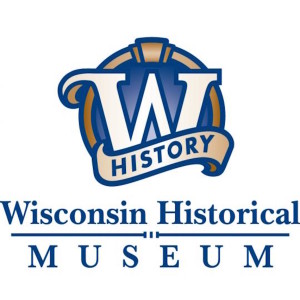 On March 17, 2016 the TLAM class made a trip to the Wisconsin Historical Museum to meet with Jennifer Kolb (Assistant Administrator of the Division of Museums and Historic Sites and WHS Native American Liaison), Angie Glasker (Assistant Curator Native American Collection), and Katie Mullen (Preservation Coordinator). The class discussed the Native American Graves Protection and Repatriation Act (NAGPRA) and the native American collections at the Wisconsin Historical Museum, and had the opportunity to explore the exhibit “People of the Woodlands.”
On March 17, 2016 the TLAM class made a trip to the Wisconsin Historical Museum to meet with Jennifer Kolb (Assistant Administrator of the Division of Museums and Historic Sites and WHS Native American Liaison), Angie Glasker (Assistant Curator Native American Collection), and Katie Mullen (Preservation Coordinator). The class discussed the Native American Graves Protection and Repatriation Act (NAGPRA) and the native American collections at the Wisconsin Historical Museum, and had the opportunity to explore the exhibit “People of the Woodlands.”
NAGPRA
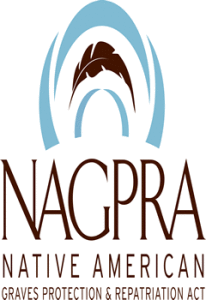 NAGPRA is a federal law that passed in 1990. It “provides a process for museums and Federal agencies to return certain Native American cultural items — human remains, funerary objects, sacred objects, or objects of cultural patrimony — to lineal descendants, and culturally affiliated Indian tribes and Native Hawaiian organizations.”[1] It is “first and foremost, human rights legislation.”[2] The Act requires federal agencies and institutions that receive federal funding to follow NAGPRA regulations. It establishes procedures for the discovery or planned excavation of Native American cultural items on federal or tribal lands and makes trafficking of Native American cultural items a criminal offense. According to the National Park Service approximately 32,000 individuals, 670,000 funerary objects, 120,000 unassociated funerary objects (meaning the human remains with which the objects were placed are not in the possession or control of the institution), and 3,500 sacred objects have been returned to their respective tribes. Most importantly, the legislation represented “fundamental changes in basic social attitudes toward Native peoples by the museum and scientific communities and the public at large.”[3]
NAGPRA is a federal law that passed in 1990. It “provides a process for museums and Federal agencies to return certain Native American cultural items — human remains, funerary objects, sacred objects, or objects of cultural patrimony — to lineal descendants, and culturally affiliated Indian tribes and Native Hawaiian organizations.”[1] It is “first and foremost, human rights legislation.”[2] The Act requires federal agencies and institutions that receive federal funding to follow NAGPRA regulations. It establishes procedures for the discovery or planned excavation of Native American cultural items on federal or tribal lands and makes trafficking of Native American cultural items a criminal offense. According to the National Park Service approximately 32,000 individuals, 670,000 funerary objects, 120,000 unassociated funerary objects (meaning the human remains with which the objects were placed are not in the possession or control of the institution), and 3,500 sacred objects have been returned to their respective tribes. Most importantly, the legislation represented “fundamental changes in basic social attitudes toward Native peoples by the museum and scientific communities and the public at large.”[3]
Museums across the country and globe had become repositories for massive numbers of Native American human remains, funerary objects and other cultural items. At the end of the 19th century, the founding of many museums and the growing fields of anthropology and archeology led to the collecting of many Native American artifacts, often by untrained people. Most institutions saw these items as curiosities or specimens and used them for anthropological research. Scholars also used the remains to explain physical and cultural differences between people. Museums are “intimately tied to the colonization process.”[4] Although there has been a move toward collaboration and consultation within the museum world, there are still a lot of problems, including a few that have been in the news recently:
● The Kennewick Man/The Ancient One
● Former National Park Service Effigy Mounds Superintendent Steals Human Remains
● Fight Over Jim Thorpe Remains
The Native American rights movements that led to NAGPRA, along with other legislation, shifted attitudes and practices in museums. NAGPRA recognized that Native American human remains and cultural items were “the remnants and products of living people, and that descendants have a cultural and spiritual relationship with the deceased.”[5] Jennifer said that, when NAGPRA was first passed, there was panic that museum vaults would be emptied and that there was a mass exodus of curators. Museums collections haven’t been completely removed. Instead, meaningful and mutually beneficial relationships have developed between museums and tribes that have led to improved care of collections and increased collaboration. Jennifer couldn’t express how important it is to consult with tribal communities. Consultation creates dialogue between tribal communities and museums. It builds trust, as well as long-term respectful and meaningful relationships. It allows institutions to apologize for the past. The Wisconsin Historical Museum continues to maintain and build their relationships with local tribal communities. These relationships go beyond NAGPRA. They help with exhibit development, programming, preservation and other aspects of museum operations.
“People of the Woodlands”
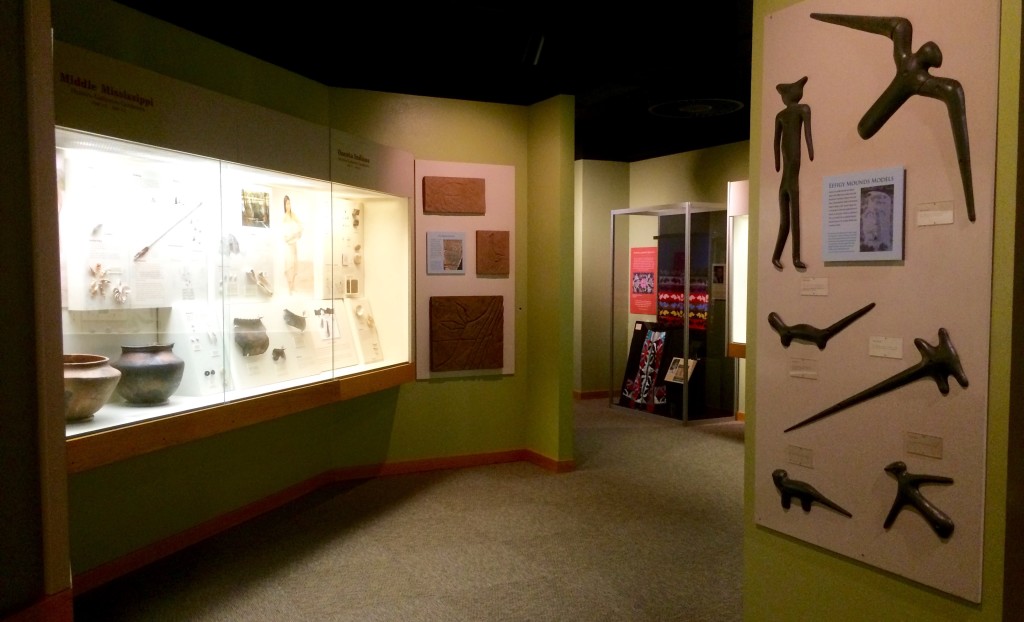
Angie gave us a tour of the “People of the Woodlands” exhibit after Jennifer’s presentation. The exhibit has been at the Museum for over 25 years and many sections of the exhibit are outdated. The exhibit space is hard to work with, and the materials currently installed are nearly impossible to alter. This has created many obstacles for Angie to overcome. Significant cuts in funding and staff has also made significant improvements difficult.
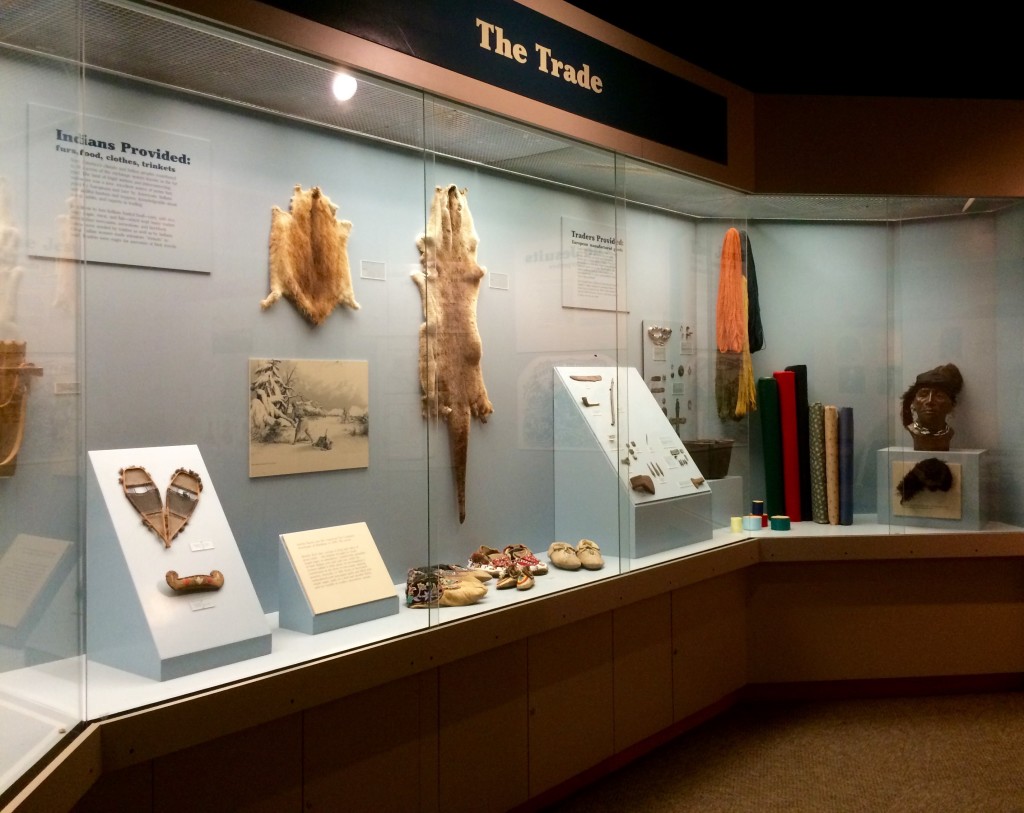
The class spent some time discussing ways that the Museum wanted to revamp the exhibit to portray Native Americans in a modern light. Exhibits “are the most prominent, public face of a museum”[6] and therefore it is incredibly important that they portray tribes in a positive and accurate way. Angie is making small but powerful steps forward to bring Native American culture to the forefront of the visitor experience. She has been installing small panels throughout the exhibit that discuss different aspects of contemporary Native life, such as language and art. Her hope is that visitors will learn about the Native history left out of history books and see that Native cultures are still alive today.
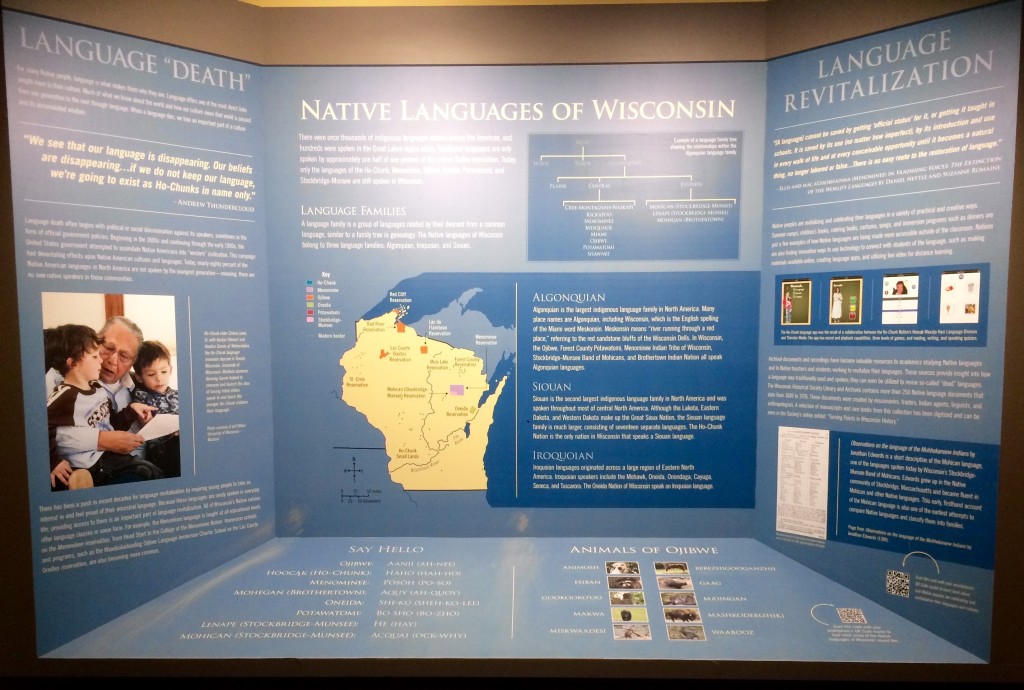
A small exhibit which would incorporate the Native perspective is slated to be installed by a museum intern. It will include contemporary reflections and a diverse group of objects and photographs that provide better context to Native life. The education staff is also supplementing the existing exhibit with experiential learning activities that provide better context for students. For example, one exhibit space contains a toolbox that holds tools used by Native Americans.
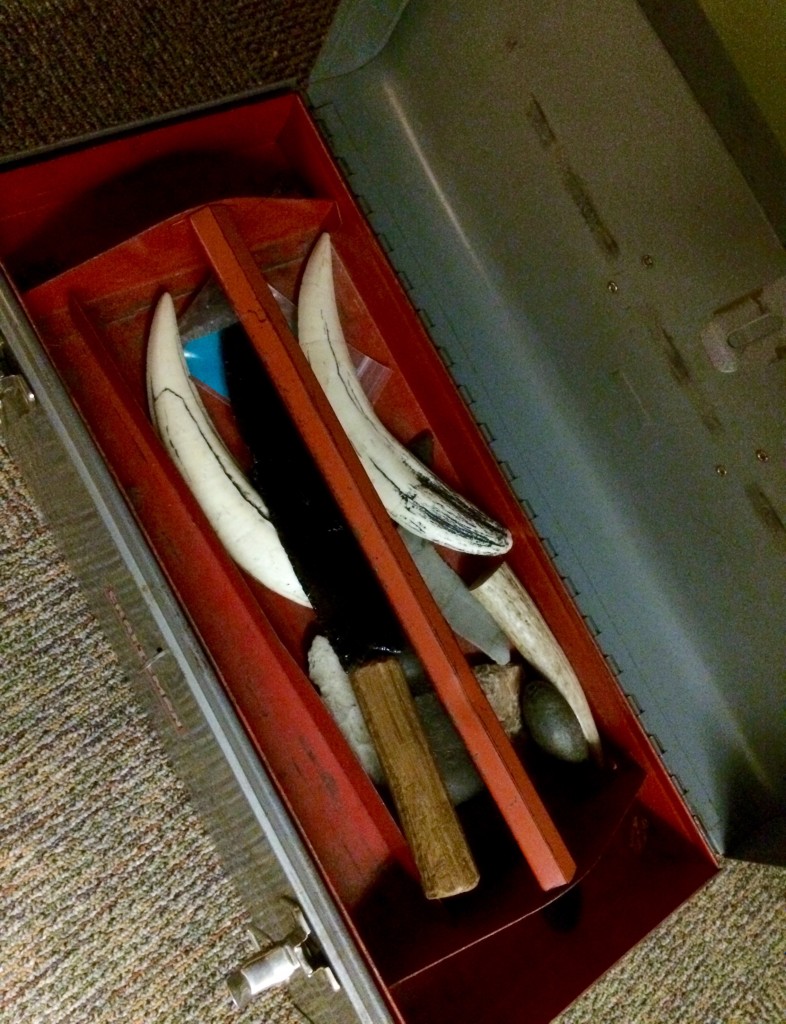
Students can touch and learn about the tools in addition to looking at similar items in the exhibit case. Angie is still very hopeful that a new Wisconsin Historical Museum facility will be opening sooner rather than later. The designs for the facility have been created with consultation of tribal communities. The facility would include outdoor ceremonial space and rooms exclusively for Native collections, which would allow for creation of new exhibit spaces that can be developed with the collaboration of tribal members.
The Wisconsin Historical Museum’s collaboration with and respect for tribal communities has set an important example and serves as a model for other institutions. Despite the challenges they still face, they are working to be great stewards by respecting and reflecting on Native American culture.
Thank you Jennifer, Angie and Katie for all the hard work that you do and for opening your doors to the TLAM group!
-Erin Hughes
Related Resources:
● Learn more about NAGPRA by visiting their website at: http://www.nps.gov/nagpra/. The FAQ page is helpful for understanding NAGPRA procedures.
● If you are interested in visiting the Wisconsin Historical Museum, or learning more about them, visit their website at: http://historicalmuseum.wisconsinhistory.org/.
● Trope, J.F., & Echo-Hawk, W.R. (January 01, 1992). The Native American Graves Protection and Repatriation Act: Background and Legislative History. Arizona State Law Journal, 24.
● Lonetree, A. (2012). Decolonizing Museums: Representing Native America in National and Tribal Museums. Chapel Hill: University of North Carolina Press.
